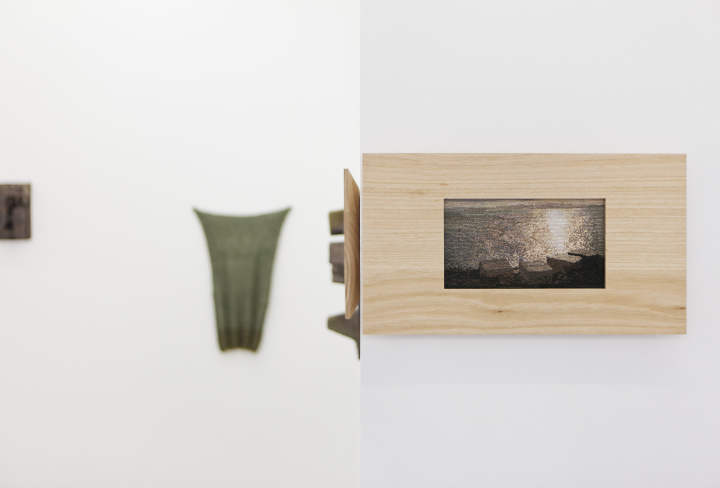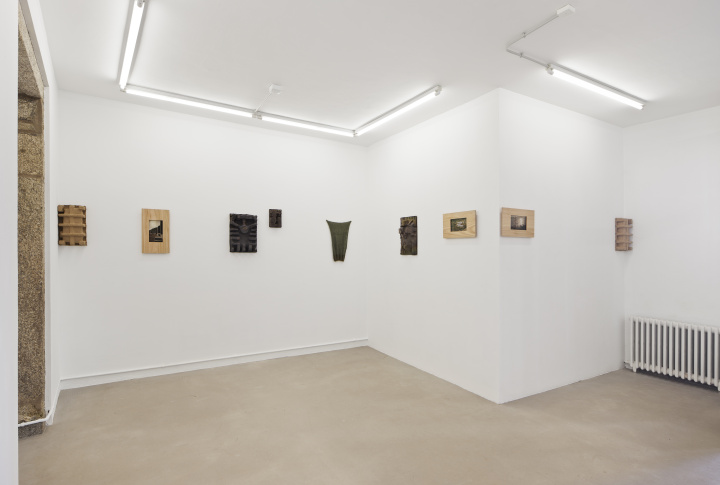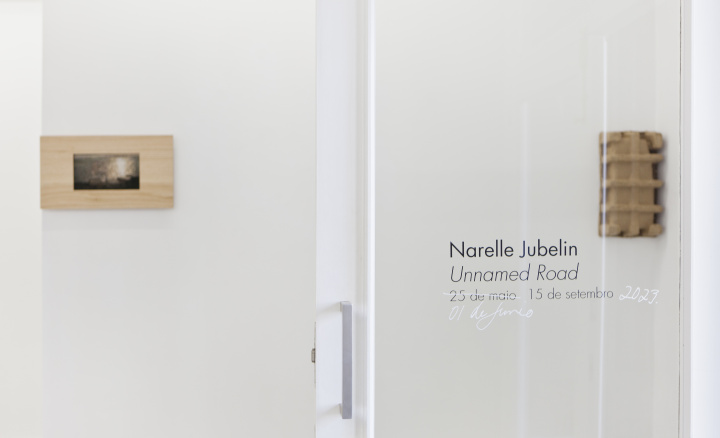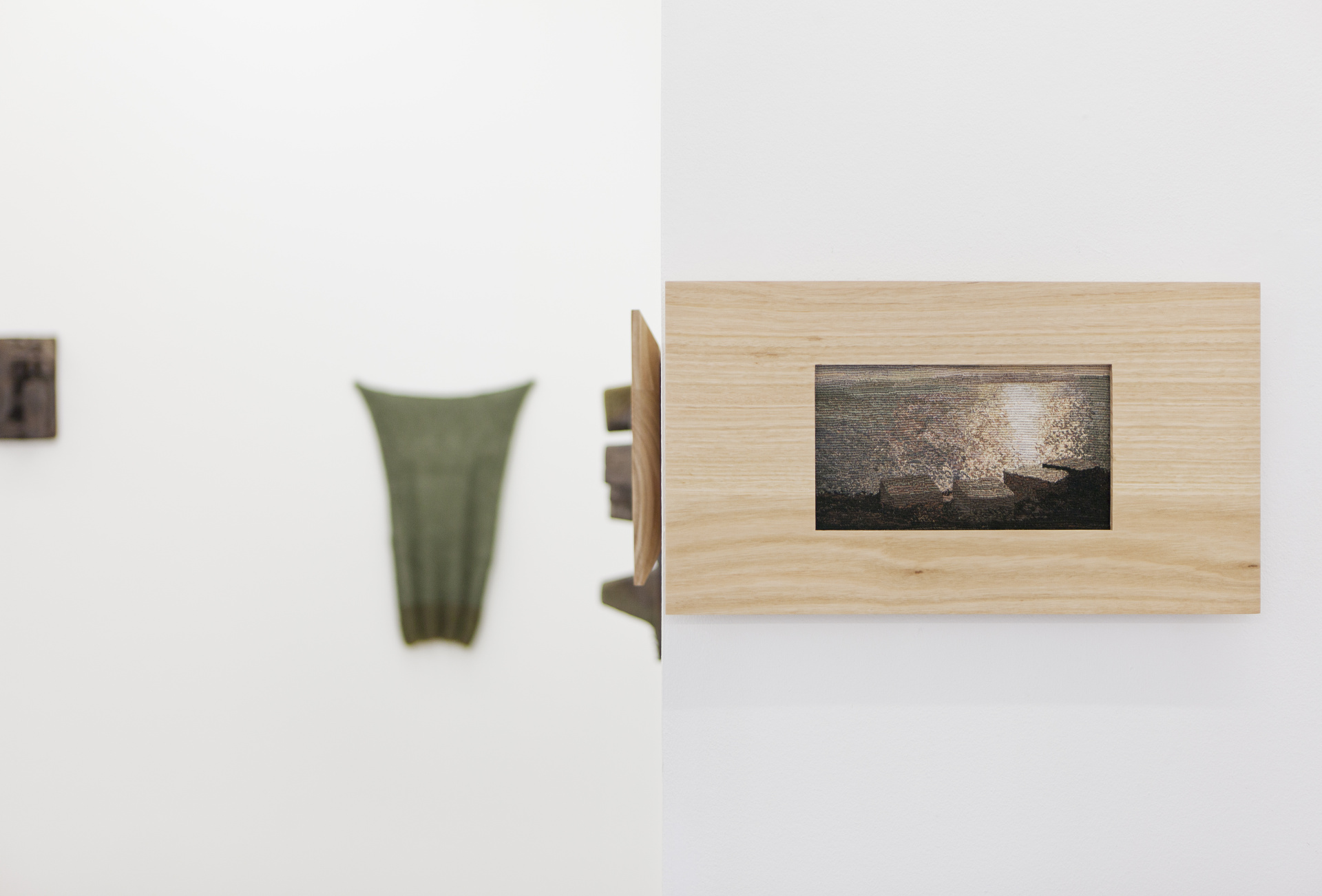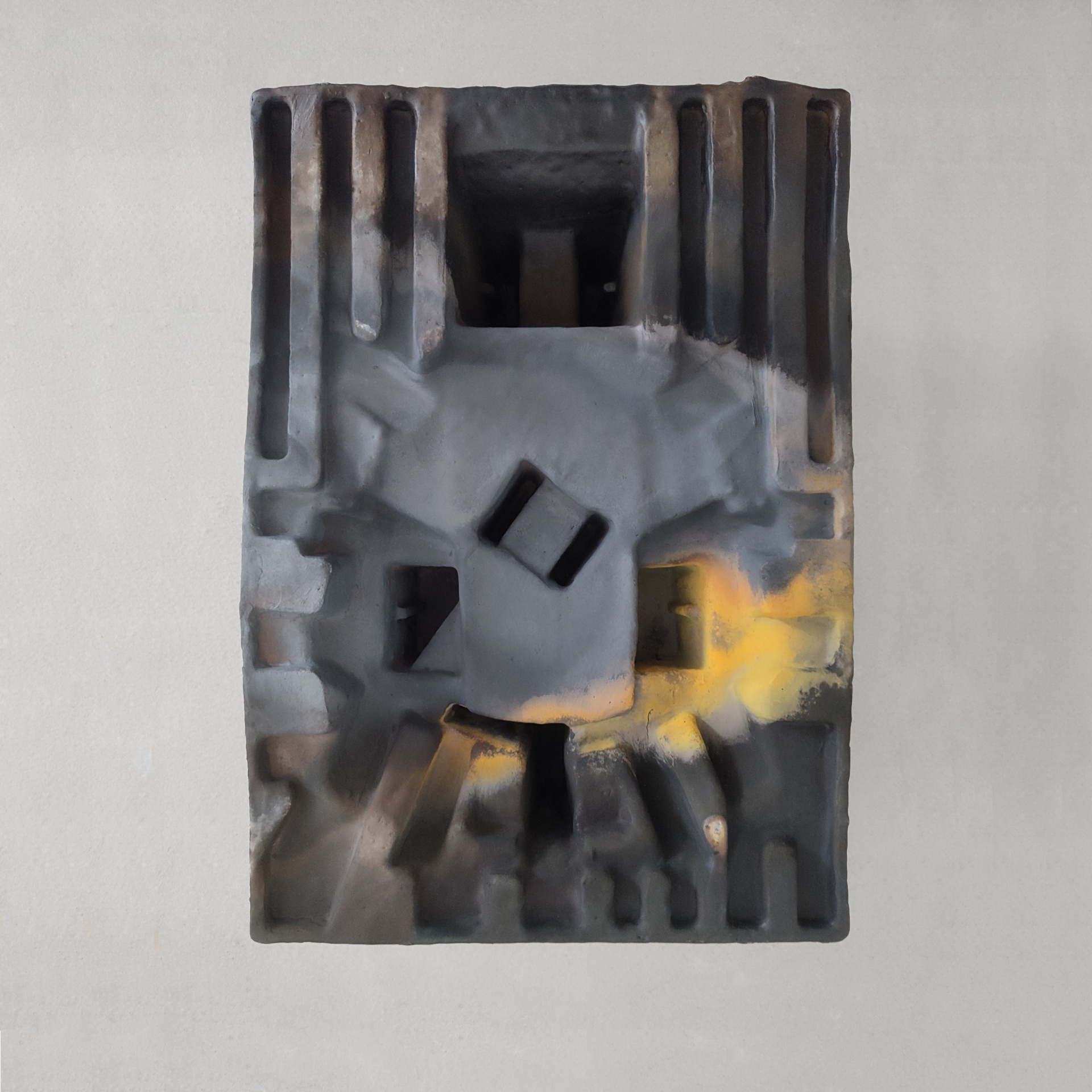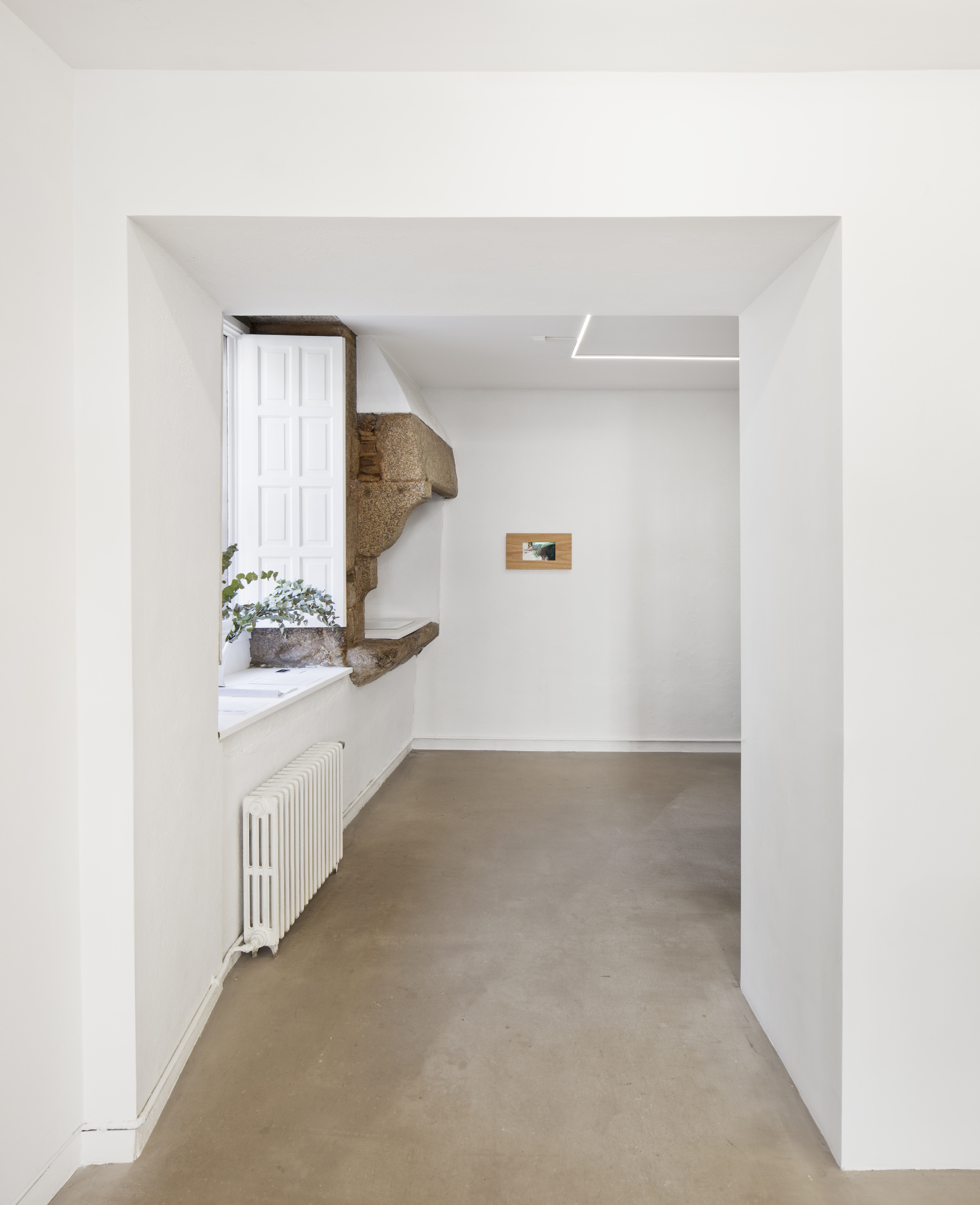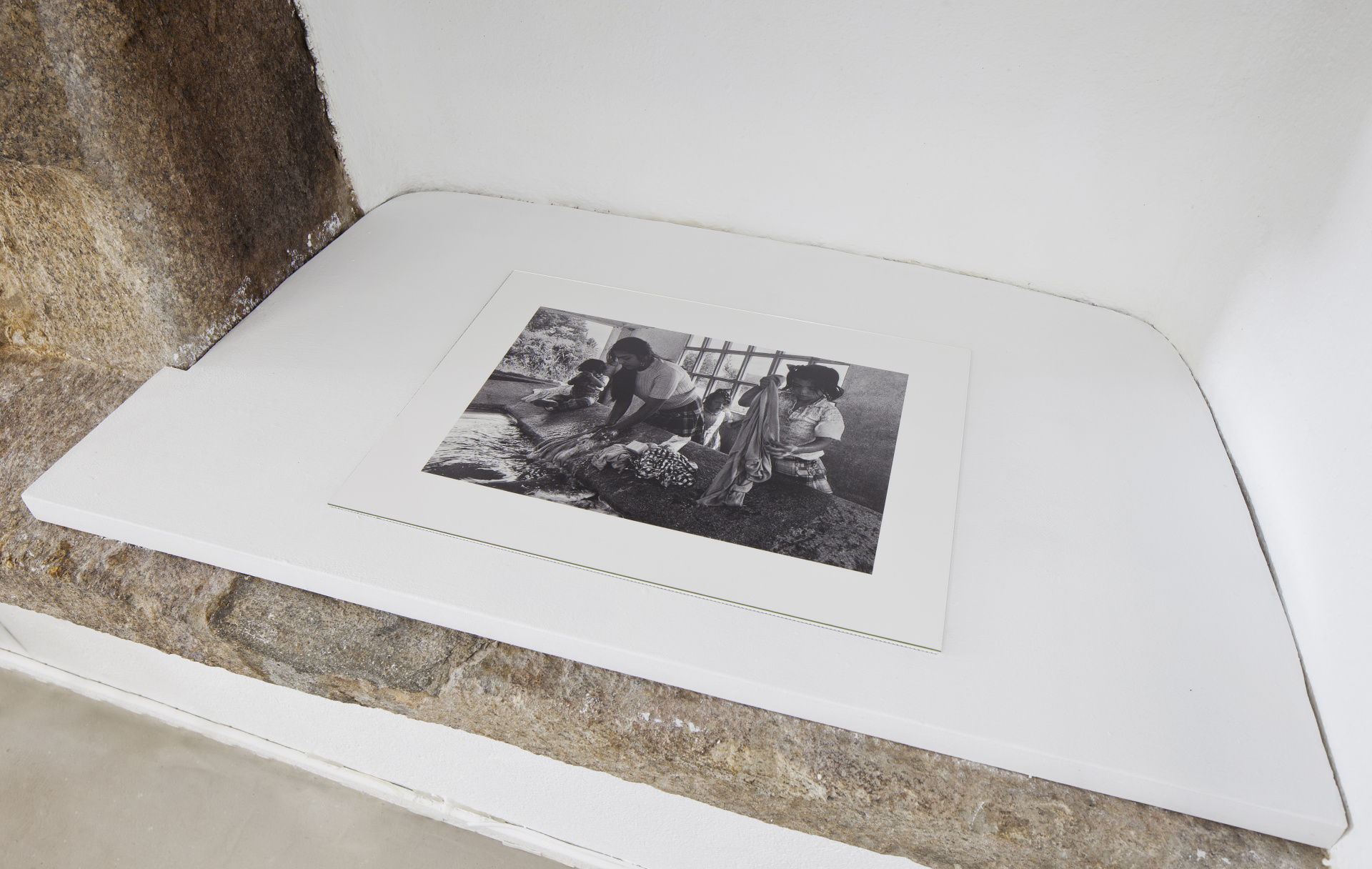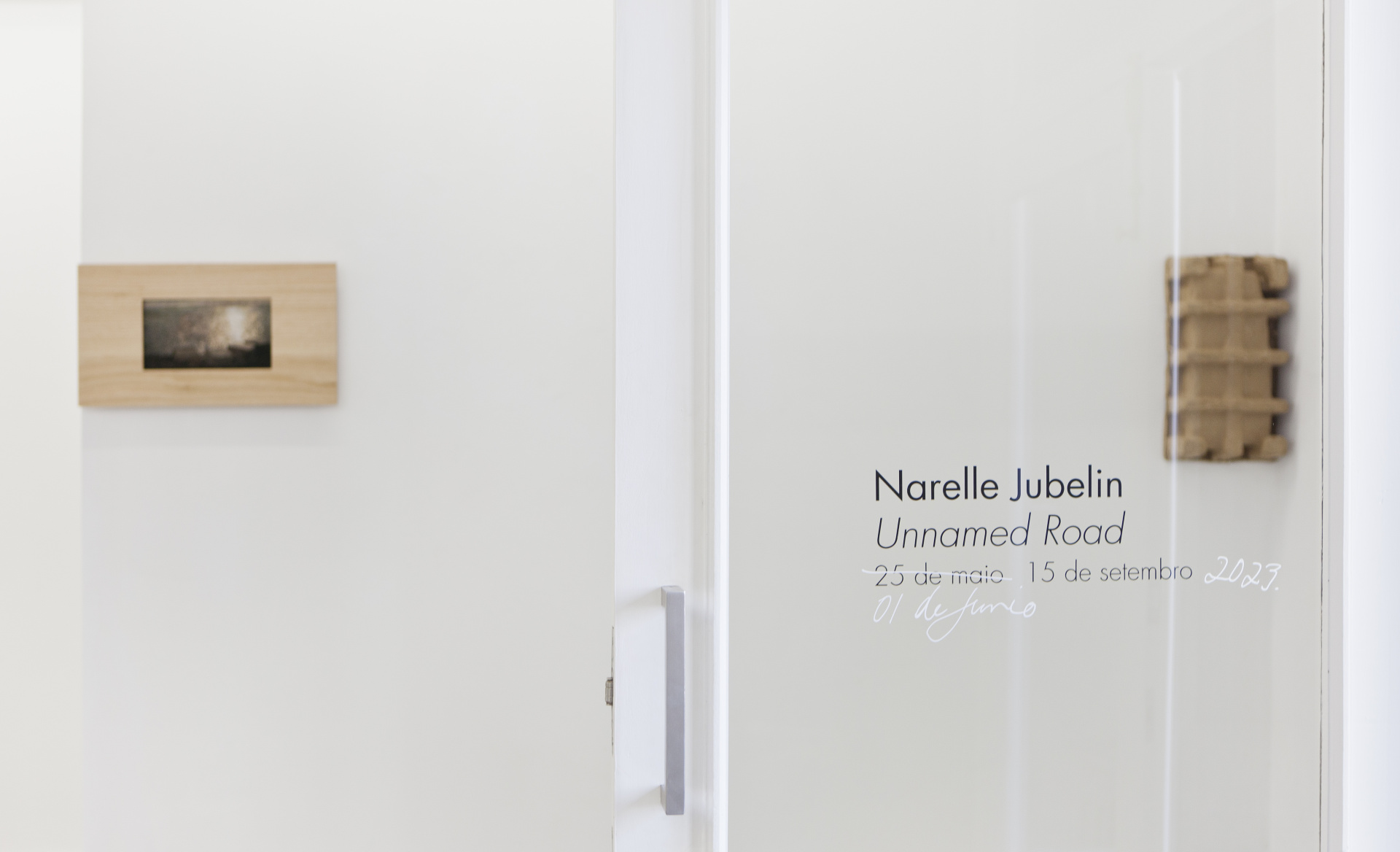Unnamed Road Narelle Jubelin From June 1 to September 15 Santiago
unnamed road - narelle jubelin
or the order of things
el negro
firstly is that it is neither a colour nor the absence of colour.
black —and here I deliberately use a neutral formula— is a spatial and therefore a temporal condition. being closely related to the origin and essence of light and, in some way, its other face, black transcends its colouristic condition in art to raise other themes and other possibilities that range from philosophy to astrophysics, passing through almost all human and humanist concerns, including aesthetics.
el cuadrado (negro)
in eastern wisdom, the square, this geometrical shape with four equal sides known in the west for his classical proportions, represents the earth; while the circle represents the sky. but what happens when the shape associated with earthly forms is presented in a kind of suspension?
the unusual way in which malevitch hung his famous black square gives us much to think about. the way of hanging high, up on the wall with a certain slant, gives it a certain corporeality that led that painting to take on an elevated form with volume.
then I think of mies van der rohe's pavilion and how he was perhaps inspired by the russian painter by presenting a suspended rectangular structure without hanging, giving ethereal qualities to an architectural form strictly attached to the terrestrial.
with this small but significant gesture, the structure seems to levitate without losing its solidity. then, the square acquires other properties that we might consider transcendent or spiritually uplifting.
the israeli artist dani karavan developed another way of understanding and using the cube when he conceived his intervention, in memory of walter benjamin, next to the marine cemetery in portbou. in this artist's case the relationship incorporates, the threshold of the passage, the descent, the critical inscription, the stairs and a small hexahedron a little bit out of the way and hidden, which could signify the journey of energy through space.
the cube is a symbol of wisdom, truth and moral perfection.
it is also the form adopted by césar portela to build the civil cemetery in fisterra.
portela's proposal shows a certain influence of van der rohe. however, the volumes arranged in front of the immensity of the sea and the sky have not achieved the purpose for which they were conceived by the architect and have not been accepted by the community for which they were conceived.
the reasons for this abandonment, disuse or rejection could be various. on the one hand, their difficult access; on the other, the radical nature of a proposal that suggests dealing with death through a spirituality that is, to a certain extent, secular or without the weight of the cross.
this radicality also traces the edge of a path in which malevitch, van der rohe, benjamin, karavan, portela and jubelin walk along.
la(s) estructura(s)
there is a certain affinity in the architectural and linguistic structures. the architect knows and he/she makes use of it. the artist knows and he/she makes use of it. the reader of the work senses it and begins to follow the proposed path and faces his or her first stumbling blocks in order to decipher the work... the work is constructed between these two spaces: the architectural and the linguistic.
this means that, outside them, outside the architectural and linguistic structures, everything is non-existent: the architect, the artist, even the reader.
the existence of the image is also linked to them.
la tierra & el paisaje
this is where the problem of translation comes in.
paisaje / landscape are not the same thing, and yet they are the words with which a certain idea is expressed in both languages.
this "problem" runs through narelle jubelin's life and work, in her inseparable relationship and in her simultaneous inhabitation of both languages.
my work does not consist in resolving this question but in studying it. it is precisely here that this possibility presents itself.
so i look at the english construction of the word landscape and discover that the affix scape has an entity of its own. that is to say, it is more complex than what is known as an affix in spanish.
scape has several meanings in different fields of knowledge: botany, zoology, entomology and architecture. the latter, on the one hand, confirms the idea of the relationship between linguistic and architectural structure; and on the other hand, it is independent of all of them, since even in isolation (i.e. without land) it can express the same idea.
this gives it a double condition: of dependence in some cases and independence in others, which I think may be a key to the reading of the work.
la tumba
when i reread paul valery's marine cemetery i have the impression that he wrote it for this moment. to be read aloud in front of empty tombs facing the immensity of the sea, overlooking the end of the earth. perhaps he wrote it for that ash that contemplates the sea in solitude.
it is a quality of poetry: its ability to anticipate. we must learn from it if we aspire to time travel and immortality.
las cenizas
another of the elements created and used by narelle jubelin are the sculptural objects that are presented as "bronzes". these bodies are born of fire. their apparently indecipherable writing is therefore associated with the history of fire and what remains of it: the ash that reminds us that it once burned.
these bronzes refer to the origins, to the first fires and the first forms of expression.
let's say that the cultural productions of humanity have changed from those early times until today. in the midst of all these transformations only the ash remains.
the ash remains faithful to itself, to the history of fire and its flames.
la imagen
the photographic image is always an intervened, falsified, modified or blurred memory of something that was or could have been.
in any medium, the image does not represent or pursue anything except to bear witness to an event suspended between the life and death of the instant. therefore, the image always ends up being a tomb on itself. a place to which one goes to pay tribute to the implacable condition of impermanence.
el ella
from a strictly critical perspective, she is an artist whose work re-updates the idea and postulates of landart. this statement might seem daring, since she does not appear to intervene in the exterior space or in what we call landscape. however, this idea is based on the observation of narelle jubelin's work processes.
the she becomes an entity within landart when she, let's say delicately and subtly, traces the paths through the work without the need to intervene. this could be an ethical and aesthetic stance that I associate with feminism and its radical approach to gender.
in contrast to other artists who have traditionally developed their practices by installing, removing, rearranging, reconfiguring, that is to say, altering and, therefore, exercising a certain "violence" within the space. while she deploys strategies that do not require the exercise of this type of force to achieve the construction of a work that overflows into the landscape and the territories it passes through.
it is important to point out that despite this apparent non-intervention, the landscapes in her work never remain the same as they were before she walked through them.
el punto
the point is drawing and writing.
beyond the technique that the artist masters and that we have seen how she has used throughout almost all her projects. le petit point gives rise to the image in which the paths cross. i don't quite know how to express this point... nevertheless, i will make an effort.
let's say that she draws a cross without carrying it. an incomplete or deconstructed cross in these random shapes / \
interested in the photographic image, she blurs the cross with different dots, somehow, in order to be able to free herself from it. it is a paradox, as it could not be otherwise.
the free use of the point that she uses, raises disjunctions closely related to the work, which in addition to formal questions, raise problems of a philosophical and existential order.
that is to say, in addition to obey laws that are only at the service of capturing the image, it is impossible not to think about what Jubelin proposes by passing from a cross to an x and from an x to its deconstruction. which can also be read as the transition from the symbol of a god (✝) to the citizen (x) and not just any citizen, but one who adopts a critical stance and questions themself (/ \)
perhaps something similar is what crosses portela's cemetery and places it in a politically uncomfortable place that alters the duty to be of this type of space.
for all this, the chosen point is central as it opens up the possibility of an uncertain path, much freer and riskier, in terms of the norm and what is considered appropriate.
in the case of the relationship with the transit between life and death, the dot poses a question that does not live the confinement inside any temple nor marks an end, but launches itself into the emptiness of the immensity of the sky and the sea.
the dot can also be read as a sign and manifestation of hecate, who since ancient times has marked the crossroads of roads —without name and certainly without number— a point of reference that, if followed, it is impossible to get lost even if it is known as
unnamed road
maria virginia jaua
madrid 27th may 2023
/ Brief bio
Narelle Jubelin is an established visual artist, born in Sydney who has lived in Madrid since 1996. She has an extensive exhibition history which, from the outset, has been marked by international scope and rigor. Her research-based practice directs our attention towards tiny fragments of large histories with great exactness. Narelle has worked in interdisciplinary, intergenerational and intercultural teams as a consulting curator, establishing MoS, The Museum of Sydney in the mid 90s (a museum on the archeological site of the first European government house, so in effect, a museum of the first 60 years of colonial occupation), and in Spain was consulting curator for the award-winning Pavilion of Pacific Islands for the world water expo, Zaragoza, 2008. More recently she was artist in residence and co-curator 2021-22 with senior Tiwi Islands artist and cultural leader Pedro Wonaeamirri for the Museu Etnològic i de Cultures del Mòn in Barcelona. Her own conceptual work is based on critical thinking, mainly by questioning the modern architectural movement and the art of the time, adapting each project to the different contexts and spaces in which they are installed.
